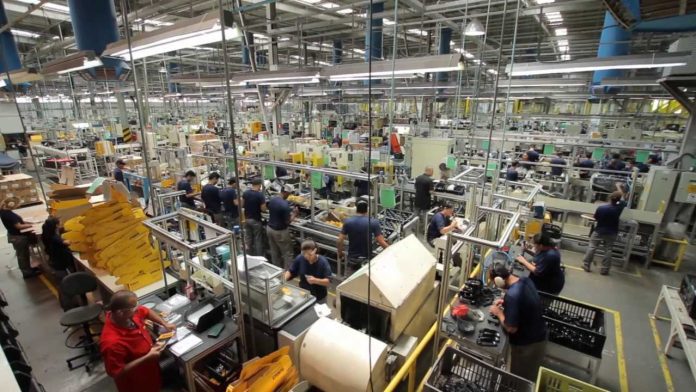Smart manufacturing is a process that utilizes internet-connected machinery to monitor the overall production process. The main goal of smart manufacturing is to identify opportunities for automating manufacturing operations and use data analytics to improve the overall performance of the manufacturing process.
The smart factory concept means the industrial or manufacturing processes will be organized in a different way compared to the traditional standards. In the era of intelligent manufacturing, the entire production chain, including suppliers, logistics and product lifecycle management will be connected across corporate boundaries.
Here, we briefly describe three smart factory case studies.
Black & Decker
Power tool manufacturer Black & Decker turned to Cisco to provide an internet of things (IoT) solution that increases visibility and decreases complexity in its manufacturing plant in Reynosa, Mexico.
Black & Decker reached out to Cisco for wireless connectivity, and to Aeroscout Industrial for its enterprise visibility solutions. Black & Decker deployed a real-time location system in the form of Wi-Fi radio-frequency identification tags that attach to nearly every material, so that tracking them becomes nearly effortless.
Aeroscout’s Wi-Fi tags integrate with the company’s Programmable Logic Controller, which monitors quality control and delivers its results once the product reaches the end of the line. This allows floor managers visibility at every step of the production process, giving them the ability to slow down or speed up processes, and see how quickly employees are completing their respective tasks.
The plant achieved an estimated 10% greater labor efficiency and better use of labor critical resources, which improved utilization rates from 80% to 90%. It also resulted in quality improvements with first-time pass defects per million opportunities reduced by 16%.
The RFID tags and Cisco wireless network increased overall equipment effectiveness by 24%, and Black & Decker estimates a significant cost saving for each line in the plant.
Great Lakes Brewing Company
Great Lakes Brewing Company, an Ohio craft brewery, worked with Rockwell Automation to connect production machinery and provide workers with the data analysis needed to improve operational efficiencies as part of a digital transformation using industrial internet of things solutions to focus on smart manufacturing. Brewery staff can access data insight by talking to Shelby, an app, built on the Microsoft Bot Framework, that uses natural language processing to help quickly identify and solve equipment problems.
Great Lakes Brewing Company is using Rockwell Automation’s FactoryTalk Analytics for Devices. The appliance captures data from an industrial network then converts the information into a “health and diagnostic dashboards,” according to the company. If there’s a problem, the system can send “action cards” to engineers’ smart phones or tablets.
In addition to supporting the Shelby app, FactoryTalk Analytics is designed with a focus on “device interactions,” which the company describes as enabling “these devices to start becoming system aware, gaining an understanding of device interactions. Understanding the devices allows a higher level of analysis to be performed. For example, the system feed can find and display issues that would normally be very hard to determine by checking each device, but since we know about each device, systemic issues can be identified and alerted on.”
Mazak
Machine tool provider Mazak teamed with Cisco to increase its manufacturing line availability and improve machine utilization through the use of fog applications. Mazak required a common, standards-based method to securely connect and receive value from the raw data in its machine’s tools.
According to Cisco, fog applications offers customers and ecosystem partners the ability to transform IoT sensor data and perform control functions within the distributed network infrastructure. The app ran on the network infrastructure to achieve real-time detection of anomalies and operator alerts. By processing the data locally rather than in a data center or cloud, Mazak provides manufacturers with secure, real-time processing right next to their critical data sources.
Through adaptive learning of expected thresholds, the combined fog application and real-time analytics monitor sensors data for any aberration or deviation from expected norms. This means Mazak’s customers can now prevent downtime, predict necessary maintenance and improve equipment effectiveness from continuous monitoring and detection of sudden temperature spikes, erratic vibration patterns and changes in pressure or coolant levels.
According to Cisco, the Japanese machine tool company needed a security system that was suitable for IT and operations technology (OT) to protect it from internal and external attackers. The application needed to run on the network infrastructure on the factory floor, immediately transforming process, overall equipment effectiveness (OEE) and sensor data. The fog application needed to support the MTConnect specification for integration with existing systems and sensors. Real-time analytics were gathered thanks to Cisco’s solution, which were able to process high frequency vibration, temperature, coolant, and sound inputs to inform operator action and drive business support systems.

